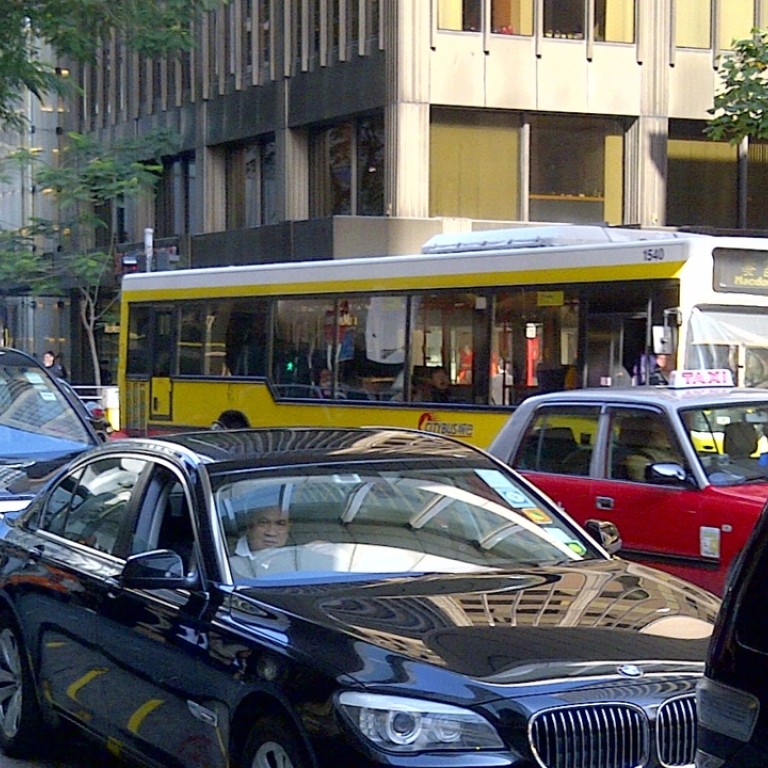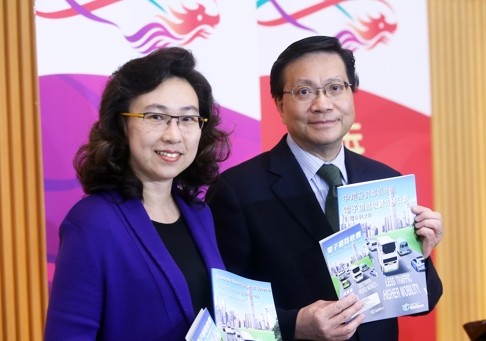
It will take more than electronic road pricing to ease traffic congestion in Hong Kong
Gary Wong says the government’s rush to implement its pilot scheme is short-sighted and officials should be looking at other measures introduced by progressive cities around the world
Hong Kong is no stranger to traffic congestion. Secretary for Transport and Housing Anthony Cheung Bing-leung announced that the government intends to consult the public over an electronic road pricing pilot scheme in Central and adjacent areas. The three-month consultation will look at the possibility of charging vehicles during peak hours to ease congestion.
Looking back, the government has already completed three studies on electronic road pricing – in 1985, 2001 and 2009. However, the city has yet to launch any charging schemes. How, then, can we expect a three-month consultation to find the silver bullet?
READ MORE: Hong Kong’s perennial traffic jams can and should be cleared
In order to relieve growing traffic problems on Hong Kong Island, construction of the Central-Wan Chai bypass began in 2010. It will connect the Island Eastern Corridor to the Rumsey Street Flyover so vehicles can travel between Sheung Wan and Wan Chai without having to pass through Central.
Another fear is that once the electronic road pricing system is implemented, only the rich will be able to use the roads in Central
In February 2014, Cheung said the government would not launch the electronic road pricing pilot scheme until after the new bypass had opened, then scheduled for 2017. This was to ensure drivers would have alternative routes to choose from.
However, construction delays now mean the bypass is only expected to be operational in 2018. Cheung has now changed tack, saying that such delays would not affect the implementation of the pilot scheme.
One electronic road pricing principle is “user pays”. However, how many vehicles are actually destined for Central? How can the administration ensure that the “user pays” principle is accurately applied to vehicles entering Central?
The government has yet to put forward any concrete analysis. So why insist on rushing through the public consultation in three months?

Another fear is that once the electronic road pricing system is implemented, only the rich will be able to use the roads in Central. How, then, should different types of vehicles be charged? What type of vehicles should be exempt?
Changing habits through charging people fees is a principle of electronic road tolls, too. The more exempt vehicles there are, the less effective the system is in reducing traffic. Other countries usually only exempt emergency vehicles. Apart from emphasising that fees should be set high enough, the Hong Kong government should also put more thought and analysis into the fee-charging mechanism for different vehicles.
One key reason why congestion is so serious in the Central business district is that there aren’t enough parking spaces. Drivers are often forced to circle the area looking for a space. Some risk being fined by leaving their vehicles in no-parking zones.

To solve this, Hong Kong could consider developing hi-tech, three-dimensional deck-style parking systems, as used in Japan.
Across the globe, cosmopolitan cities have varying degrees of traffic problems. Apart from establishing electronic road pricing systems in congested areas, governments are also exploring other ways to tackle traffic problems. From the perspective of reducing traffic at source, increasing the cost of first-time vehicle registration and license fees is one option. Governments can also look at optimising public transport routes and improving reliability. A multipronged approach is the best way to enhance traffic efficiency.
Gary Wong is a governor at the Path of Democracy think tank and a Chevening Scholar

